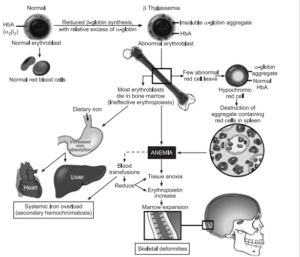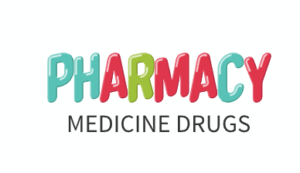Symptoms Of Anemia. | Haematological Diseases
Anemia symptoms vary depending on the cause of anemia but may include:
- Fatigue
- Weakness
- Pale skin
- a fast or irregular heartbeat
- Shortness of breath,
- Chest pain
- Dizziness
- Cognitive problems,
- Cold hands and feet and Headache.
Initially, anemia can be so mild it goes unnoticed. But symptoms increase as anemia worsens.
Complications Of Anemia. | Haematological Disease
Left untreated, anemia can cause numerous Anemia Symptoms & Complications \ such as:
Heart problems: Anemia can lead to a rapid or irregular heartbeat (arrhythmia). Heart must pump more blood to compensate for the lack of oxygen in the blood in anaemic condition. This can even lead to congestive heart failure.
Death: Some inherited anemias, such as sickle cell anemia, can be serious and lead to life-threatening complications. Losing a lot of blood quickly results in acute, severe anemia and can be fatal.
Tests and Diagnosis Anemia. | Haematological Diseases
Physical exam: To find out how severe anemia is and to check for possible causes includes:
- Listen to heart for a rapid or irregular heartbeat,
- Listen to lungs for rapid or uneven breathing,
- Feel abdomen to check the size of liver and spleen,
- Pelvic or rectal exam to check for common sources of blood loss.
These findings can be important clues to the underlying etiology of disorder and provide information related to the duration of illness. The skin and mucous membranes are often bypassed, so that pallor, abnormal pigmentation, icterus, spider nevi, petechiae, purpura, angiomas, ulcerations, palmar erythema, coarseness of hair, puffiness of the face, thinning of the lateral aspects of the eyebrows, nail defects, and a usually prominent venous pattern on the abdominal wall are missed in the rush to examine the heart and the lungs.
Complete blood count (CBC): A CBC is used to count the number of blood cells in a sample of blood. For anemia, count of the red blood cells contained in the blood (hematocrit) and the hemoglobin in blood. Normal adult hematocrit values vary from one to another but are generally between 40 and 52 % for men and 35 and 47 % for women. Normal adult hemoglobin values are generally 14 to 18 grams per deciliter for men and 12 to 16 grams per deciliter for women. A test to determine the size and shape of red blood cells: Some of red blood cells may also be examined for unusual size, shape and colour. It can help to pinpoint a diagnosis.
For example, in iron deficiency anemia, red blood cells are smaller and paler in colour than normal. In vitamin deficiency anemias, red blood cells are enlarged and fewer in number.
Additional tests to detect Anemia Symptoms:
Iron deficiency anemia can result from chronic bleeding of ulcers, benign polyps in the colon, colon cancer, tumors or kidney problems. Occasionally, it may be necessary to
study a sample of bone marrow to diagnose anemia.
Treatments and Drugs For Anemia. | Haematological Disease
Anemia treatment depends on the cause.
Ferrous Sulfate Therapy: The appropriate treatment of anemia due to blood loss is correction of the underlying condition and oral administration of ferrous sulfate until the anemia is corrected and for several months afterward to ensure that body stores are replaced with iron. Relatively few indications exist for the use of parenteral iron therapy, and blood transfusions should be reserved for the treatment of shock or hypoxia.
Iron deficiency anemia: This form of anemia is treated with changes in diet and
iron supplements. If the underlying cause of iron deficiency is loss of blood, other than
from menstruation, the source of the bleeding must be located and stopped. This may involve surgery.
Vitamin deficiency anemia: Folic acid and vitamin C deficiency anemias are treated with dietary supplements and increasing these nutrients in diet. If digestive system has trouble in absorbing vitamin B12 from the food the person should take vitamin B12 injections.
Anemia of chronic disease: There is no specific treatment for this type of anemia. If symptoms become severe, a blood transfusion or injections of synthetic erythropoietin, a hormone normally produced by kidneys, may help to stimulate red blood cell production and ease fatigue.
Aplastic anemia: Treatment for this anemia may include blood transfusions to boost levels of red blood cells. It may need a bone marrow transplant if bone marrow is diseased and cannot make healthy blood cells.
Anemia treatment depends on the cause.
Ferrous Sulfate Therapy: The appropriate treatment of anemia due to blood loss is correction of the underlying condition and oral administration of ferrous sulfate until the anemia is corrected and for several months afterward to ensure that body stores are replaced with iron. Relatively few indications exist for the use of parenteral iron therapy, and blood transfusions should be reserved for the treatment of shock or hypoxia.
Iron deficiency anemia: This form of anemia is treated with changes in diet and iron supplements. If the underlying cause of iron deficiency is loss of blood, other than from menstruation, the source of the bleeding must be located and stopped. This may involve surgery.
Vitamin deficiency anemia: Folic acid and vitamin C deficiency anemias are treated with dietary supplements and increasing these nutrients in diet. If digestive system has trouble in absorbing vitamin B12 from the food the person should take vitamin B12 injections.
Anemia of chronic disease: There is no specific treatment for this type of anemia. If symptoms become severe, a blood transfusion or injections of synthetic erythropoietin, a hormone normally produced by kidneys, may help to stimulate red blood cell production and ease fatigue.
Aplastic anemia: Treatment for this anemia may include blood transfusions to boost levels of red blood cells. It may need a bone marrow transplant if bone marrow is diseased and cannot make healthy blood cells.

Prevention Of Anemia. | Haematological Diseases
Vitamin rich diet: Many types of anemia cannot be prevented. However, iron deficiency anemia and vitamin deficiency anemia can be avoided by choosing a diet
that includes a variety of vitamins and nutrients, including:
Iron: Iron-rich foods include beef and other meats, beans, lentils, iron-fortified
cereals, dark green leafy vegetables, and dried fruit.
Folate: This nutrient and its synthetic form folic acid can be found in citrus fruits
and juices, bananas, dark green leafy vegetables, legumes, and fortified breads,
cereals and pasta.
Vitamin B12: This vitamin is found naturally in meat and dairy products. It is
also added to some cereals and soya products, such as soya milk.
Vitamin C: Foods containing vitamin C such as citrus fruits, melons and berries help increase iron absorption.
Related Feed
Anemia Risk Factors & Pathophysiology Of Its Types | Haematological Disease
Haematological Diseases | Anemia Disorders Conditions | Hematology Anemia Rash
Chronic Renal /Kidney Failure Symptoms | Diagnosis & Treatment Drugs
Arteriosclerosis vs Atherosclerosis | What distinguishes Atherosclerosis from Arteriosclerosis

